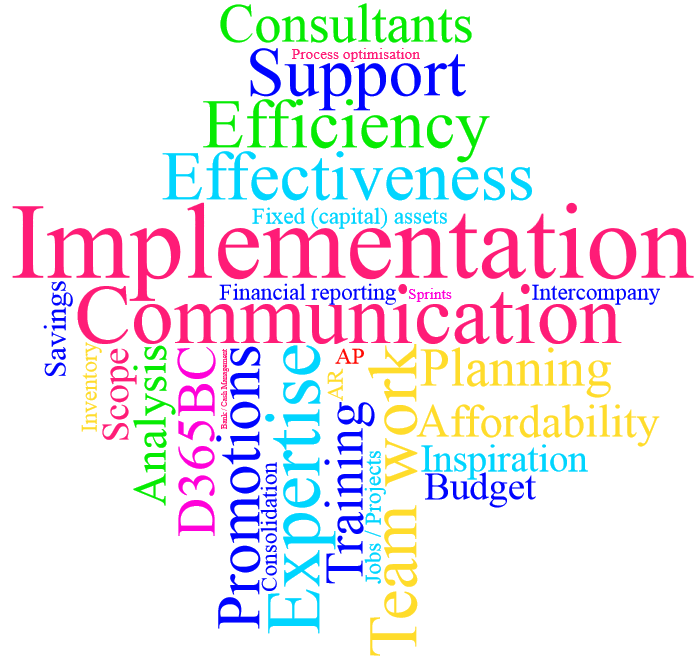
Introduction
At Peace Systems we know that any successful ERP implementation (e.g. Microsoft Dynamics 365 Finance and 365 Supply Chain Management, Microsoft Dynamics 365 Business Central) begins with one key question: “What are the business objectives?” The answer determines the methodology, the project completion budget and the necessary timeline.
A typical ERP implementation usually consists of the following components:
- Analysis and design
- Data migration
- System configuration
- Development
- Training
- UAT (user acceptance testing)
- Go-Live activities
1. Analysis and Design
- Objectives: conduct fit-gap analysis, devise the business process and system configuration.
- Participants: Peace Systems functional and technical consultants working together with our clients’ SMEs (subject matter experts).
- Artifacts (deliverables): FRD (functional requirement document) and/or design document.
2. Data Migration
- Objectives: transfer master data records (e.g. G/L Accounts, Vendors, Items, etc.) and opening balances (e.g. AP, AR, inventory, etc. – these are prepared closer to the Go-Live date) from the source environment to the target environment.
- Participants: Peace Systems functional consultants and our clients’ SMEs.
- Artifacts (deliverables): templates, clean data.
3. System Configuration
- Objectives: set up the ERP system.
- Participants: Peace Systems functional consultants.
- Artifacts (deliverables): key system setups completed.
4. Development
- Objectives: fill in the gap between the required business processes and the missing OOB (out-of-the-box) functionality.
- Participants: Peace Systems technical consultants (developers).
- Artifacts (deliverables): the code written and deployed to meet the requirements.
5. Training
- Objectives: provide the education necessary to use the system to the extent that is required in order to meet the business objectives that have been documented.
- Participants: Peace Systems functional consultants and our clients’ SMEs (“train the trainer” methodology).
- Artifacts (deliverables): training sessions.
6. UAT
- Objectives: test the system to ensure that all the required business processes that have been documented can be successfully carried out in the system.
- Participants: Our clients’ SMEs.
- Artifacts (deliverables): test scripts (scenarios) and issue log.
7. Go-Live Activities
- Objectives: prepare for and successfully deploy the system.
- Participants: Peace Systems functional and technical consultants working together with our clients’ SMEs.
- Artifacts (deliverables): the ERP system that meets or exceeds the documented requirements and functions in accordance with the conducted UAT.
To learn more about ERP system implementation strategies in general or in the context of your business, contact us.
